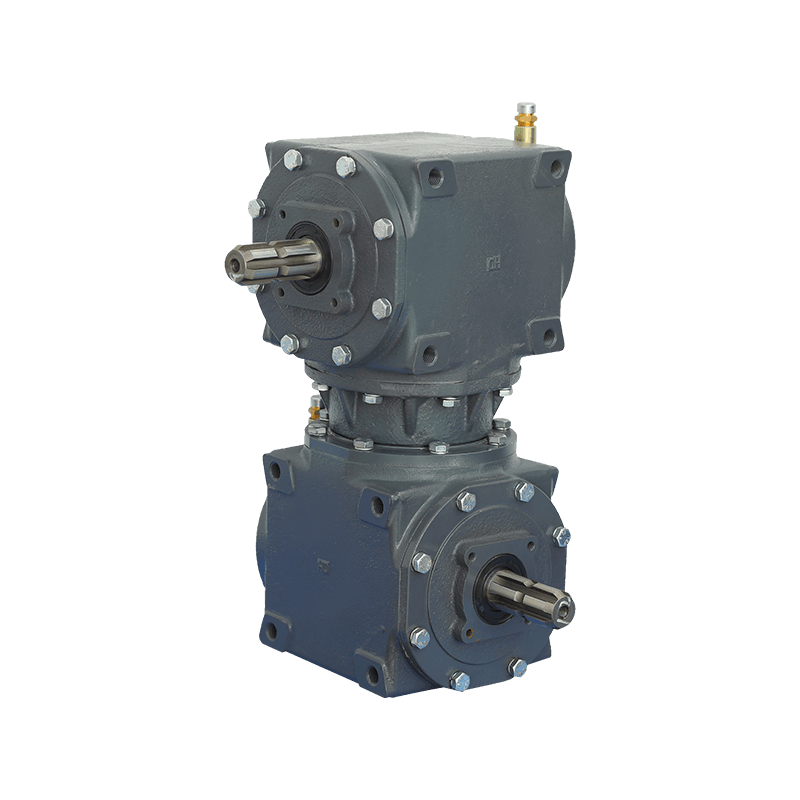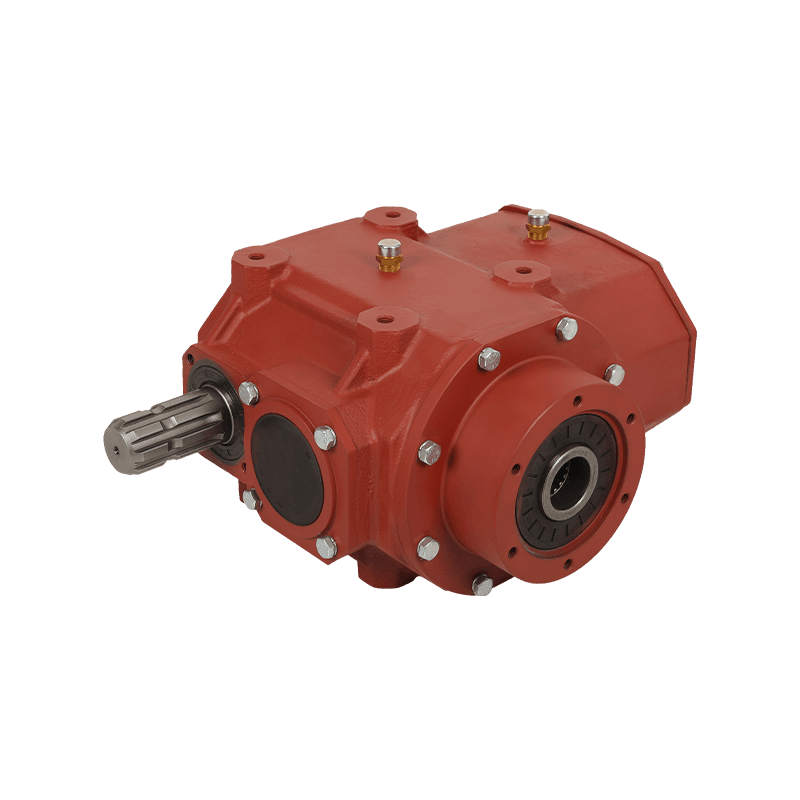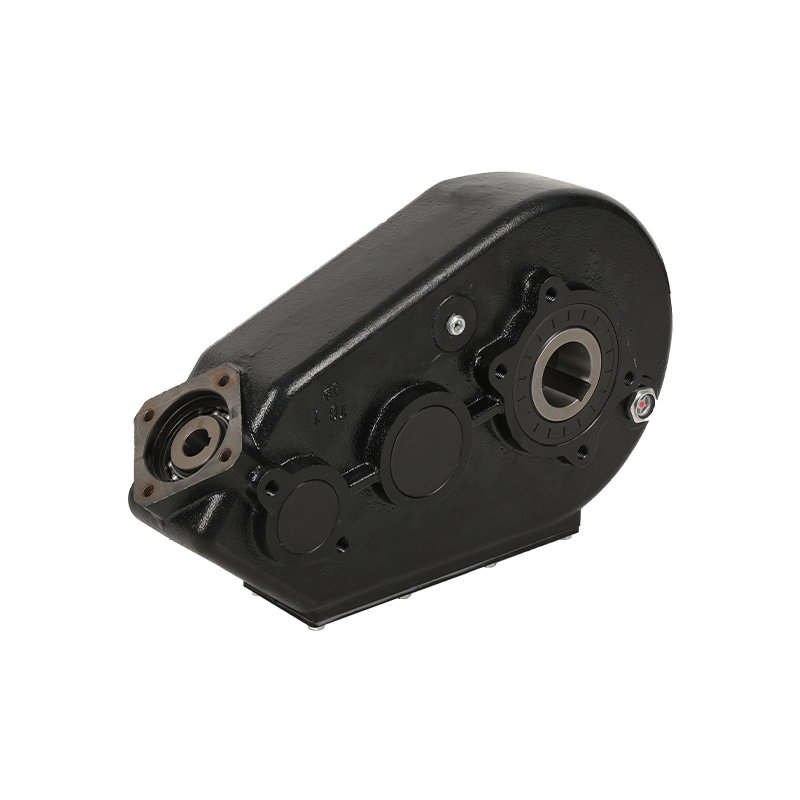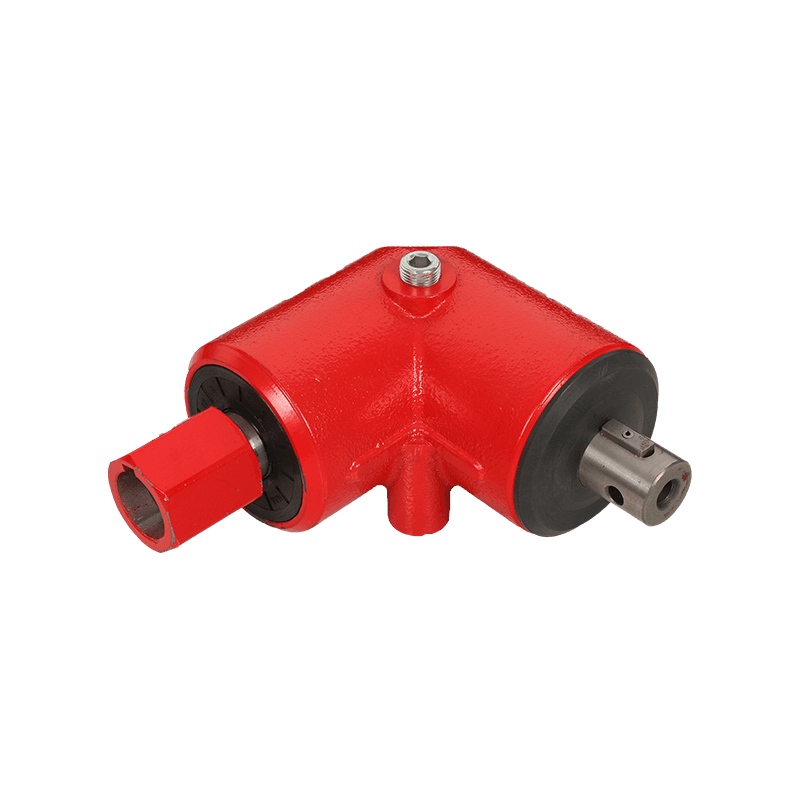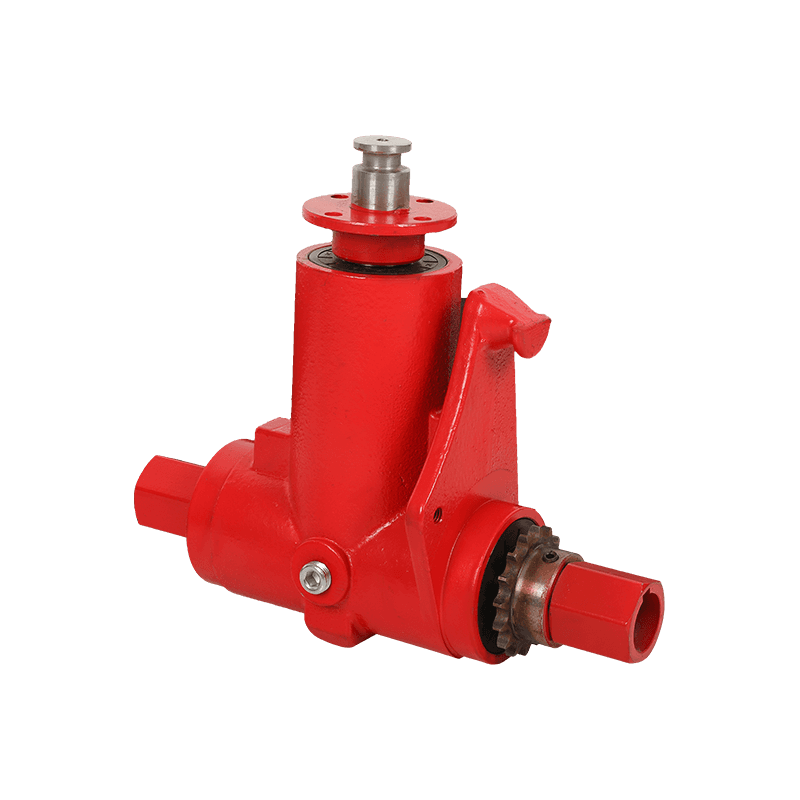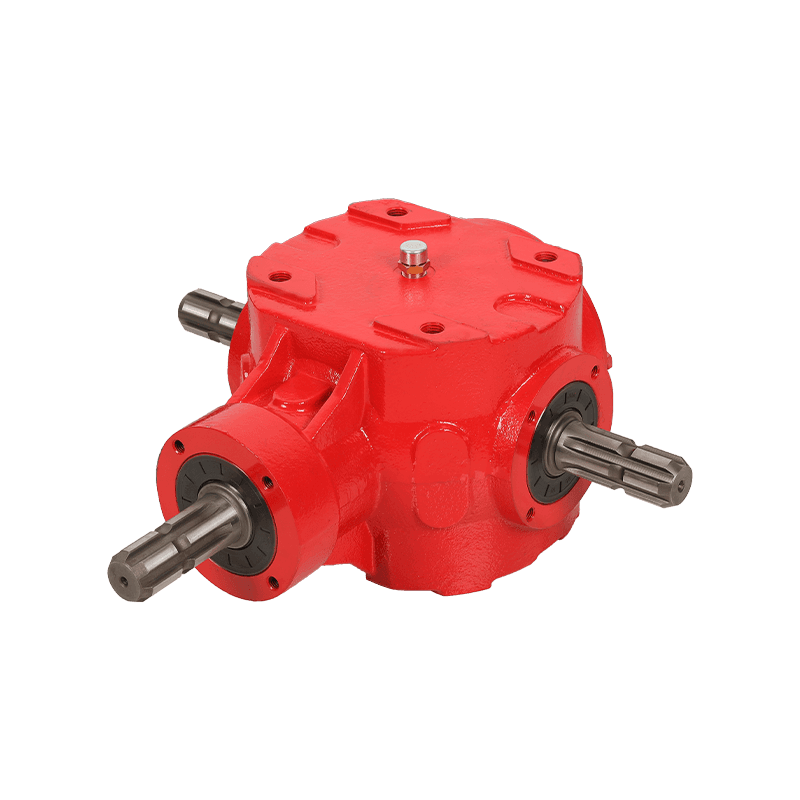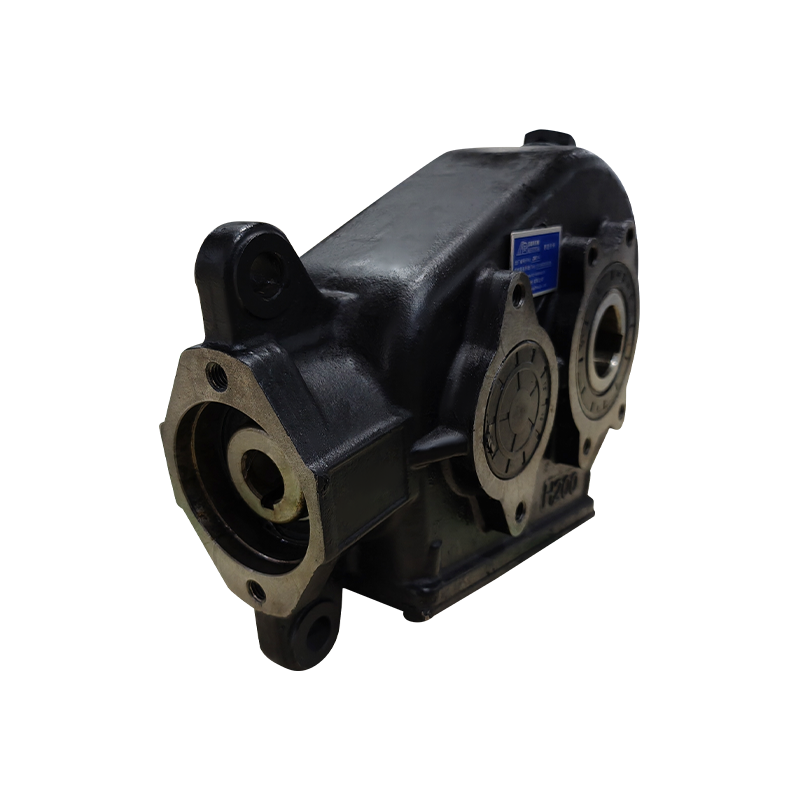1. Introduction
In the realm of agricultural machinery and certain industrial applications, the Grader Driven Rake Gear Box plays a pivotal role. It serves as a crucial component that enables the efficient operation of rake systems, which are essential for tasks such as gathering hay, crop residues, or other materials. This gear box is designed to transmit power from a power source, typically a tractor or an electric motor, to the rake mechanism, ensuring smooth and reliable operation.
2. Structure of the Grader Driven Rake Gear Box
2.1 Housing
The housing of the gear box is usually made of high - strength materials such as cast iron or aluminum alloy. Cast iron housings offer excellent durability and vibration damping properties, which are beneficial in harsh working environments. Aluminum alloy housings, on the other hand, are lighter in weight, which can be advantageous for applications where mobility is a concern. The housing is designed to protect the internal gears and other components from dust, dirt, and moisture, while also providing a rigid structure for mounting the gears and shafts.
2.2 Gears
Input Gear: The input gear is connected to the power source, such as the output shaft of a tractor's power - take - off (PTO). It is designed to receive the rotational power and transfer it to the other gears within the gear box. Input gears are often made of high - quality alloy steels, which are heat - treated to enhance their strength and wear resistance.
Intermediate Gears: In many grader - driven rake gear boxes, there are intermediate gears that help in changing the speed and direction of rotation. These gears are strategically placed between the input and output gears to achieve the desired transmission ratio. Intermediate gears can be spur gears, helical gears, or bevel gears, depending on the specific design requirements of the gear box.
Output Gear: The output gear is connected to the rake mechanism. It transfers the rotational power from the gear box to the rake, causing it to rotate and perform its function of gathering materials. The output gear is designed to handle the high torque requirements of the rake operation and is typically larger in size compared to some of the other gears in the gear box.
2.3 Shafts
Input Shaft: The input shaft is directly connected to the input gear and rotates at the same speed as the power source. It is designed to transmit the rotational force from the power source to the gears within the gear box. Input shafts are usually made of strong steel and are supported by bearings to ensure smooth rotation.
Output Shaft: The output shaft is connected to the output gear and transfers the rotational power to the rake. It must be able to withstand the high torque and load exerted by the rake during operation. Output shafts are often larger in diameter and made of high - strength materials to handle the demanding conditions.
Intermediate Shafts: Intermediate shafts support the intermediate gears and facilitate the transfer of power between different gears in the gear box. These shafts are also designed to be strong and rigid to ensure efficient power transmission.
2.4 Bearings and Seals
Bearings: Bearings are used to support the shafts and reduce friction during rotation. In a grader - driven rake gear box, various types of bearings such as ball bearings, roller bearings, and needle bearings may be used. Ball bearings are suitable for applications with relatively light loads and high speeds, while roller bearings and needle bearings can handle heavier loads. Bearings are carefully selected based on the specific requirements of the gear box, including the speed, load, and operating conditions.
Seals: Seals are crucial for preventing the leakage of lubricants from the gear box and keeping out dust and dirt. There are different types of seals used in gear boxes, such as lip seals, mechanical seals, and O - rings. Lip seals are commonly used to seal the shafts and prevent the escape of lubricants. Mechanical seals are more complex and are used in applications where a higher level of sealing is required. O - rings are used to seal joints and prevent fluid leakage.
3. Working Principle of the Grader Driven Rake Gear Box
When the power source, such as a tractor's PTO, is engaged, the input shaft of the gear box starts to rotate. The input gear, which is attached to the input shaft, meshes with the intermediate gears. As the input gear rotates, it causes the intermediate gears to rotate as well. The intermediate gears, in turn, transfer the rotational power to the output gear.
The ratio of the number of teeth on the input gear to the number of teeth on the output gear determines the transmission ratio of the gear box. For example, if the input gear has 20 teeth and the output gear has 40 teeth, the transmission ratio is 2:1. This means that for every two rotations of the input shaft, the output shaft will rotate once. The transmission ratio can be adjusted by changing the number of teeth on the gears or by using different gear combinations within the gear box.
The rotational power from the output gear is then transferred to the output shaft, which is connected to the rake mechanism. The output shaft rotates the rake, causing it to move and gather the materials. The gear box also helps in changing the direction of rotation if required. For example, bevel gears can be used to change the direction of rotation by 90 degrees, which is useful in some rake designs where the rake needs to operate at a different angle relative to the power source.
4. Applications of the Grader Driven Rake Gear Box
4.1 Agricultural Applications
Hay Raking: In the agricultural industry, one of the most common applications of grader - driven rake gear boxes is in hay raking. Hay rakes are used to gather cut hay into windrows, which makes it easier to bale and store. The gear box provides the necessary power and speed reduction to rotate the rake tines at an appropriate speed for efficient hay gathering. Different types of hay rakes, such as side - delivery rakes and rotary rakes, use gear boxes to operate.
Crop Residue Management: After harvesting crops such as wheat, corn, or soybeans, there is often a significant amount of crop residue left in the field. Grader - driven rake gear boxes are used in machinery designed to gather and manage this crop residue. The rake can collect the residue and move it to a specific location for disposal, composting, or further processing. This helps in preparing the field for the next planting season and also reduces the risk of pests and diseases that can be harbored in the crop residue.
Forage Harvesting: In addition to hay, other forage crops such as alfalfa or clover are also harvested and processed. Rake gear boxes are used in forage harvesters to gather the forage crops and transport them to the processing equipment. The gear box ensures that the rake operates smoothly and efficiently, even in challenging field conditions.
4.2 Industrial Applications
Waste Management: In some industrial settings, such as recycling plants or waste disposal facilities, grader - driven rake gear boxes can be used in equipment designed to sort and gather waste materials. The rake can separate different types of waste, such as paper, plastic, or metal, and move them to the appropriate processing areas. This helps in improving the efficiency of the waste management process and reducing the amount of waste that ends up in landfills.
Mining and Quarrying: In the mining and quarrying industries, rake gear boxes can be used in machinery for gathering and transporting materials. For example, in a quarry, a rake equipped with a gear box can be used to collect broken rocks and move them to a conveyor belt for further processing. The gear box provides the necessary power and torque to handle the heavy loads and rough working conditions in these industries.
5. Maintenance and Troubleshooting of the Grader Driven Rake Gear Box
5.1 Regular Lubrication
Lubrication is essential for the proper functioning of the gear box. The gears and bearings within the gear box need to be lubricated to reduce friction and wear. Regularly check the lubricant level and quality. Most gear boxes use oil or grease as lubricants. The type of lubricant used depends on the specific requirements of the gear box, such as the operating temperature, load, and speed. Change the lubricant at the recommended intervals, which is usually after a certain number of operating hours. For example, some gear boxes may require the lubricant to be changed after 500 - 1000 hours of operation.
5.2 Inspection of Gears and Shafts
Periodically inspect the gears and shafts for signs of wear, damage, or misalignment. Look for cracks, pitting, or excessive wear on the gear teeth. If any damage is detected, the affected gear may need to be replaced. Check the shafts for any signs of bending or corrosion. Bent shafts can cause problems with the alignment of the gears and lead to premature wear. If a shaft is bent, it may need to be straightened or replaced. Also, ensure that the gears are properly meshed and that there is no excessive backlash.
5.3 Bearing and Seal Replacement
Bearings and seals are prone to wear and may need to be replaced over time. If a bearing fails, it can cause the shaft to wobble, which can damage the gears and other components in the gear box. Look for signs of bearing failure, such as excessive noise, vibration, or heat. If a bearing needs to be replaced, use the correct type and size of bearing as specified by the manufacturer. Seals that are leaking should be replaced immediately to prevent the loss of lubricant and the entry of contaminants into the gear box.
5.4 Troubleshooting Common Problems
Excessive Noise: Excessive noise from the gear box can be caused by several factors, such as worn gears, misaligned shafts, or lack of lubrication. Check the gears for wear and the shafts for alignment. Add lubricant if the level is low.
Overheating: Overheating of the gear box can be due to high loads, insufficient lubrication, or a problem with the cooling system (if there is one). Reduce the load on the gear box if possible, check the lubricant level and quality, and ensure that the cooling system (such as a fan or heat exchanger) is working properly.
Loss of Power Transmission: If the gear box is not transmitting power effectively, it could be due to a broken gear, a slipped belt (if there is a belt - driven system), or a problem with the coupling between the gear box and the power source or the rake mechanism. Inspect the gears, belts, and couplings for any signs of damage or failure.
6. Conclusion
The Grader Driven Rake Gear Box is an essential component in a variety of applications, particularly in agriculture and certain industrial sectors. Its well - designed structure, based on gears, shafts, bearings, and seals, enables it to efficiently transmit power and control the operation of rake mechanisms. By understanding its working principle, applications, and maintenance requirements, users can ensure the reliable and long - lasting performance of the gear box, which in turn contributes to the overall efficiency of the machinery in which it is installed. Whether it's in the fields for hay raking or in industrial settings for waste management, the grader - driven rake gear box plays a crucial role in getting the job done effectively.



 English
English 中文简体
中文简体 عربى
عربى русский
русский Español
Español




